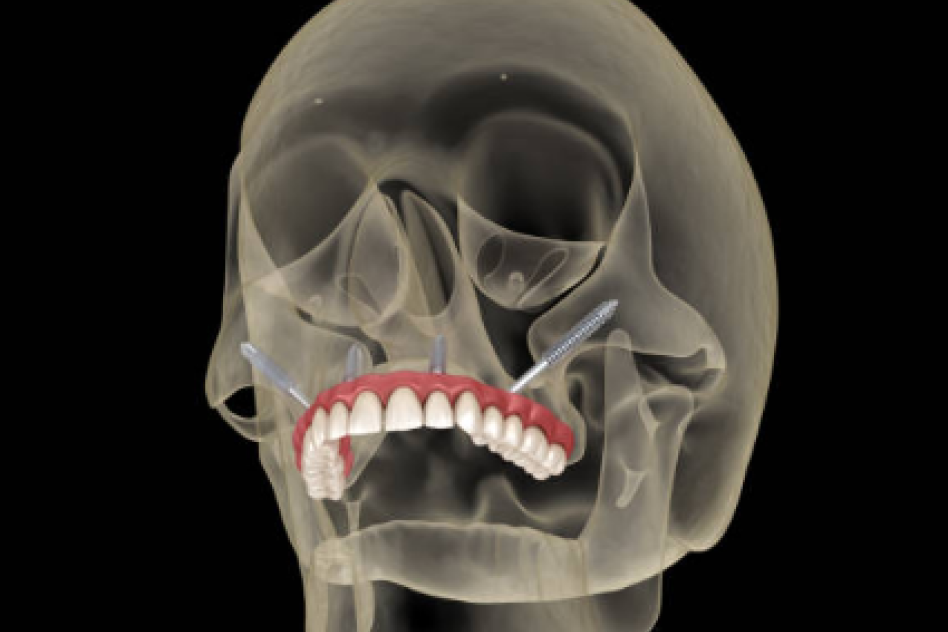Zygomatic implants are a specialized type of dental implant designed for patients who have severe bone loss in the upper jaw and are not suitable candidates for traditional implants.
Unlike regular implants, which are anchored in the jawbone, zygomatic implants are longer and are anchored in the dense zygomatic bone (cheekbone).
This procedure allows patients with inadequate upper jawbone to receive fixed teeth without the need for bone grafting, providing a secure, long-term solution for those who have suffered significant bone resorption due to tooth loss, periodontal disease, or trauma.

Process:
- Initial Consultation: The process begins with a detailed consultation with your oral surgeon or implant specialist. During this consultation, the doctor will conduct a thorough examination, which includes digital imaging, CT scans, and X-rays to assess the structure of your facial bones and determine the suitability of zygomatic implants. The dentist will discuss your medical history, the potential risks and benefits, and the overall treatment plan, including the number of implants needed.
- Treatment Planning: A customized treatment plan will be developed based on your specific needs. The plan includes determining the number of zygomatic implants required (usually 2 to 4 per side, depending on the case) and their precise placement. The dentist will also discuss anesthesia options, which can range from local anesthesia with sedation to general anesthesia, depending on the complexity of the procedure and patient preference.
- Preparation for Surgery: Prior to surgery, pre-operative instructions will be provided. These may include avoiding certain medications, fasting, and arranging for post-surgical care. If necessary, medications like antibiotics or anti-inflammatories may be prescribed to minimize infection risk.
- Surgery – Placing the Zygomatic Implants:
- Anesthesia: On the day of the surgery, the chosen anesthesia will be administered to ensure you are comfortable and pain-free.
- Incisions and Exposure: The oral surgeon will make incisions in the gum tissue to expose the underlying bone.
- Drilling and Placement: Using precise surgical techniques and guided by the pre-operative scans, the surgeon will create channels in the zygomatic bone. The zygomatic implants, which are longer than conventional implants, will then be carefully inserted through the jawbone and into the zygomatic bone. Depending on the patient’s needs, traditional implants may also be placed in the front part of the upper jaw for additional support.
- Closure: The gums are then sutured back into place, covering the implant sites.
- Immediate Loading (Optional): In some cases, the procedure may include immediate loading, where a temporary fixed bridge is attached to the implants on the same day of the surgery. This allows the patient to leave the clinic with a functional set of teeth, though the final prosthetic teeth will be fitted later, once healing is complete.
- Healing and Recovery: A healing period follows the surgery, during which time the implants will gradually integrate with the bone through a process called osseointegration. This process usually takes between 4 to 6 months. During this time, it is essential to follow the post-operative care instructions provided by your dentist or oral surgeon to manage discomfort, reduce swelling, and prevent infection. Regular follow-up appointments will be scheduled to monitor your progress.
- Final Restoration: Once the healing phase is complete and the implants have successfully integrated with the bone, the final custom-made prosthetic teeth are fabricated and securely attached to the zygomatic implants. This permanent restoration will look, feel, and function like natural teeth, allowing for a comfortable bite and a natural-looking smile

